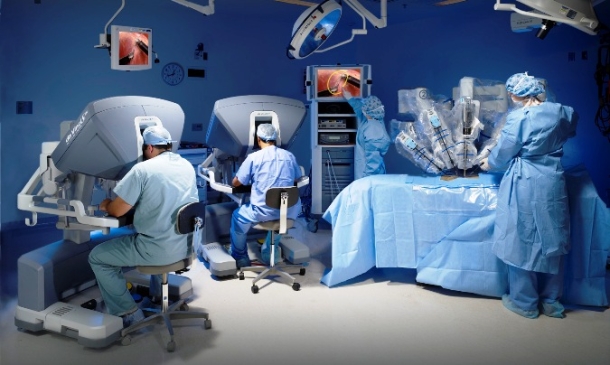by Brian L. Grant, MD
A series of articles in the Sunday Seattle Times presented interesting and provocative news regarding our health care industry.
The lead article, “Use of surgical robots booming despite hefty cost” by Carol Ostrom describes the medical arms race in the form of surgical robots. The value of these devices are debated relative to costs and clearly the technology carries a steep price– $2.6 million for the da Vinci surgical robot. A related article shows how a small community hospital in Pullman, WA invested in the multimillion robotic device in order to attract surgical talent. Pullman Regional’s CEO Scott Adams said he advocated to make the hefty investment because a urologist can bring $2 million a year to the hospital. No matter that the sort of elective surgery these robotic devices enable can be performed quite competently without the robots or with them at a larger regional center a relatively short drive away. The key driving force for these new age devices is economical. These decisions are multiplied with other costly investments that are overdone and redundant – but whose costs are passed on to insurance carriers and those who pay the premiums or the taxes. In the article, Dr. Marty Makery, a general surgeon and director of surgical quality at John Hopkins said, “Out of all the instruments and surgical tools that hospitals have adopted, this is one of the most expensive items in American operating rooms today. It’s a symbol of what’s wrong with American health care: the widespread adoption of expensive new technology with little evidence to support its use — all within the context of a poorly informed, even misinformed, public.” These costs are paid both on a per surgery basis, but also perhaps in the form of more surgery being performed. Especially is the case in the areas of gynecological procedures like hysterectomy or prostate procedures – many of which are not clinically appropriate and hotly contested. Do we as patients really benefit when unnecessary surgery is done better, if indeed this is the case as device advocates claim?
On the editorial page is an op-ed, “Medical reform, Act II- how best to deliver health care,” by Dr. David Fleming, the King County (Seattle) director of public health. He displays the well-worn statistics contrasting the U.S. health spend vs. other developed countries, with life expectancy. There is not only no correlation, but there is a negative correlation in the countries highlighted. Could it be our system is sick? Do surgical robots represents part of the symptoms of our illness? Read More…


Leave a Reply